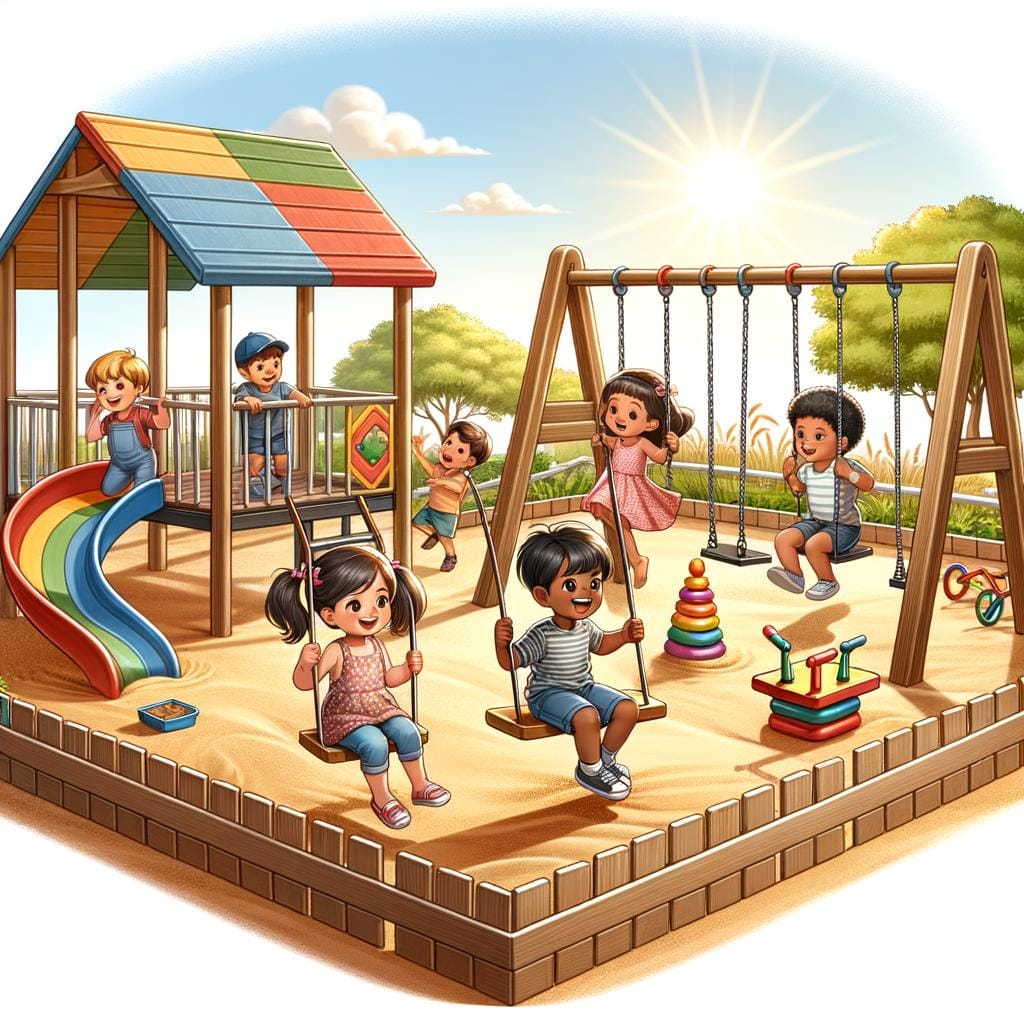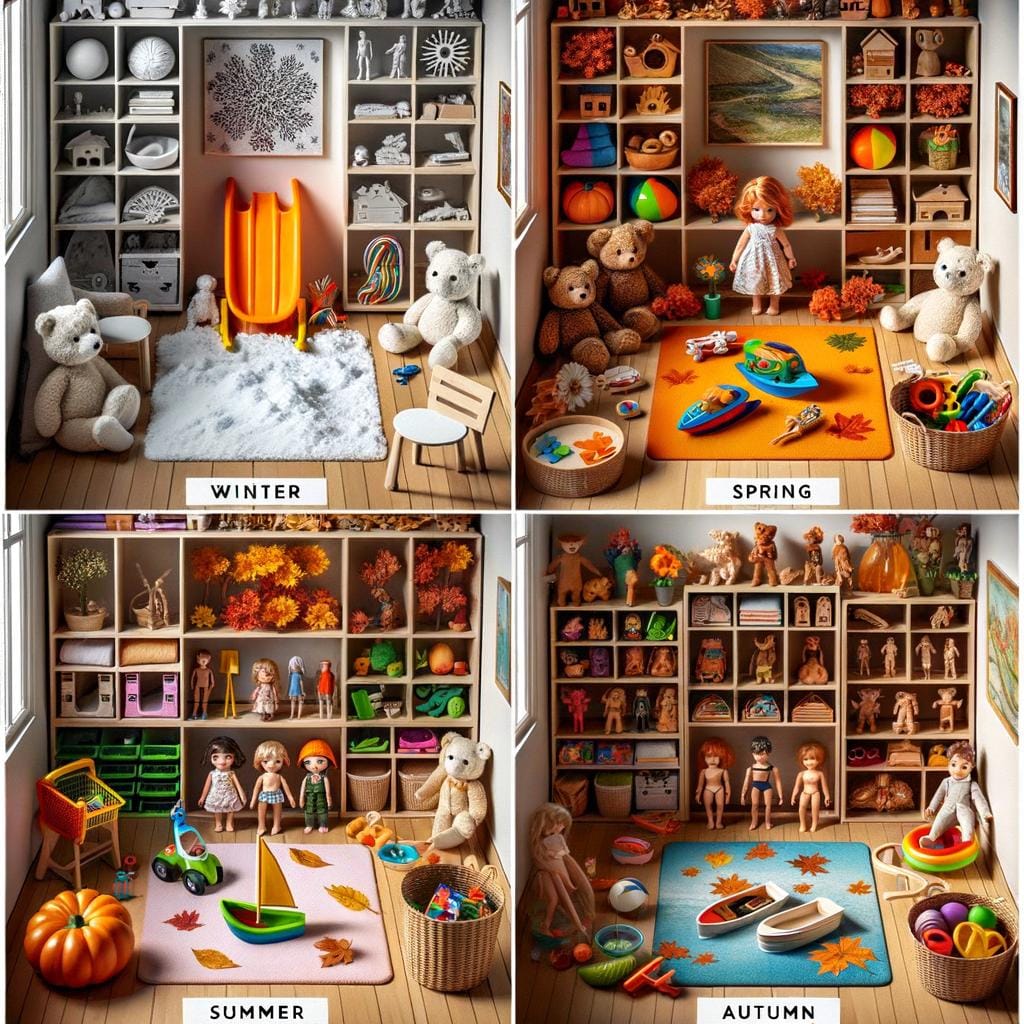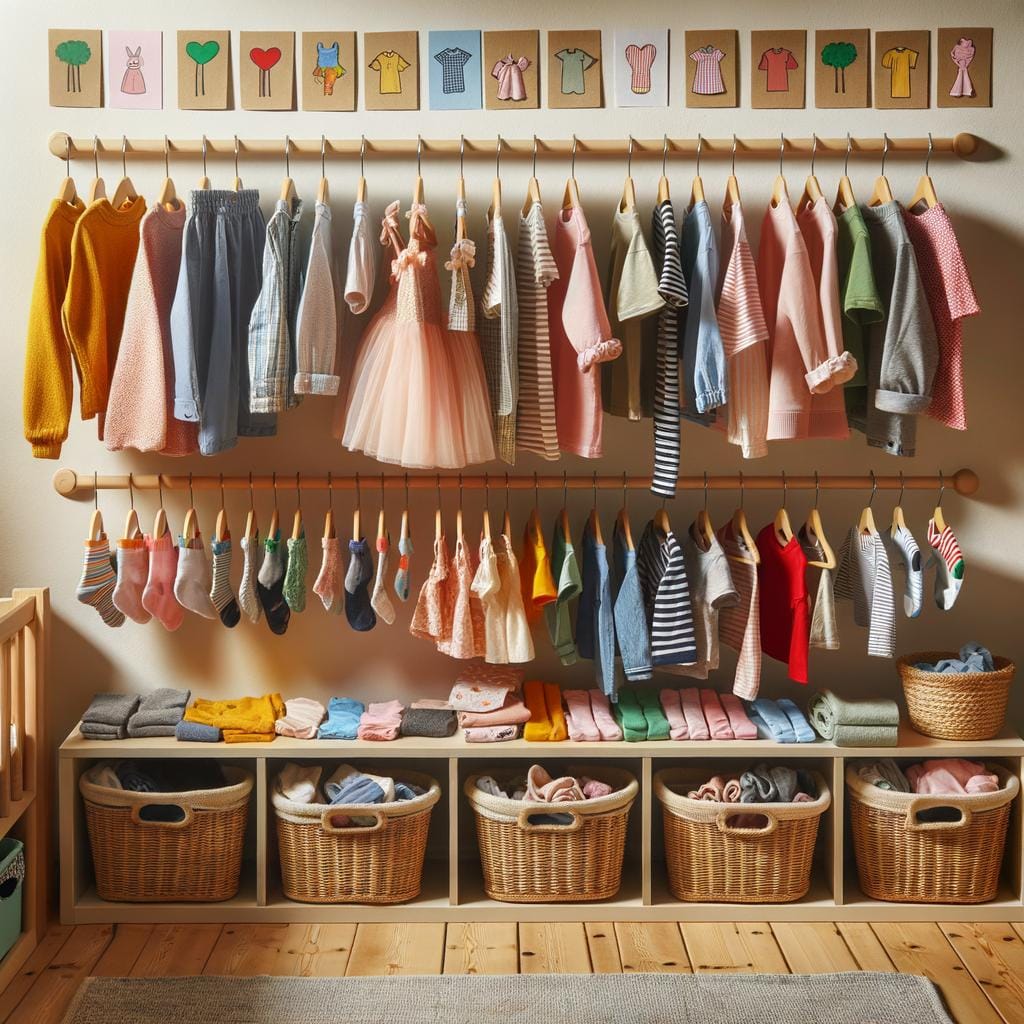Play Area Setups are crucial for children’s development, providing them with opportunities to engage in physical activity, social interaction, and imaginative play. The design and layout of play areas can significantly impact a child’s growth and learning experiences. Whether it’s outdoor or indoor, structured or unstructured, play areas offer a range of benefits that contribute to the holistic development of a child.
When considering play area setups, factors such as space availability, safety measures, and age-appropriate elements must be taken into account. Play areas should include essential components like swings, slides, climbing structures, and other interactive features that promote active play and stimulate creativity. Additionally, DIY options using recycled materials or affordable equipment provide creative ways to design engaging play spaces at home.
Furthermore, commercial play area setups are also available for parks, schools, or communities looking to invest in pre-designed playgrounds. Maintaining these play areas is essential to ensure they remain clean, safe, and inviting for children to enjoy. Ultimately, the benefits of play area setups extend beyond just physical exercise; they also foster social skills development and enhance cognitive abilities in children.
Types of Play Areas
Outdoor play areas offer children the opportunity to engage with nature, explore their surroundings, and develop physical skills. These setups can include playgrounds with equipment like swings, slides, and climbing structures, as well as open spaces for running, jumping, and playing games.
Outdoor play areas encourage children to be active, build their muscles, and improve their coordination while enjoying the fresh air and sunshine. Additionally, outdoor play provides kids with sensory experiences like feeling different textures underfoot, hearing the sounds of nature, and observing various colors and shapes in the environment.
On the other hand, indoor play areas provide a safe and controlled environment for children to play regardless of the weather conditions outside. These setups are often found in homes, schools, or recreational centers and can include facilities like ball pits, jungle gyms, trampolines, and creative play areas.
Indoor play areas are especially beneficial during colder months or rainy days when outdoor play may not be possible. They also offer opportunities for imaginative play where children can pretend to be anything they want in a themed setting.
When it comes to structured versus unstructured play areas, both have their benefits. Structured play areas typically have specific equipment or activities designed to promote certain skills or facilitate organized games. These setups can be found in playgrounds or schools where there are designated spaces for swings, slides, monkey bars or sports fields.
On the other hand, unstructured play areas allow children more freedom to create their own games and explore their surroundings without predetermined rules or guidelines. Both types of setups are important for children’s development as they encourage different forms of creativity, social interaction, problem-solving skills, and physical activity.
Designing a Play Area
When designing a play area for children, there are several critical factors to consider to ensure that the space is safe, engaging, and age-appropriate. One of the primary considerations is the available space for the play area. Whether you are creating an indoor playroom or an outdoor playground, it’s essential to make the most of the area while leaving enough room for children to move around comfortably and safely.
Safety is another crucial aspect when designing a play area setup. Ensure that all equipment meets safety regulations and standards to prevent any potential injuries. Properly installing soft surfaces like rubber mulch or mats under climbing structures and swings can help cushion falls and reduce the risk of accidents. Additionally, regularly inspecting and maintaining the play area equipment is vital to address any wear and tear promptly.
Age-appropriateness is also a key factor in designing a successful play area setup. Tailoring the equipment and activities to suit the developmental stages of the children using the space ensures that they can engage in play safely while enhancing their physical abilities. For example, younger children may benefit from low-to-the-ground structures with simple activities like crawling spaces and shape sorters, while older kids might enjoy more challenging elements like climbing walls and monkey bars.
| Factor | Consideration |
|---|---|
| Space | Maximize use of available area; Allow enough room for movement |
| Safety | Meet safety regulations; Install soft surfaces beneath play equipment |
| Age-appropriateness | Tailor equipment & activities to suit children’s developmental stages |
Essential Elements of Play Areas
When designing a play area for children, it is crucial to include essential elements that cater to their physical development and provide opportunities for fun and exploration. Incorporating a variety of equipment not only keeps kids engaged but also helps in developing their coordination, strength, and social skills. Here are some key elements that can transform a regular play area into an exciting and stimulating setting for children to enjoy:
- Swings: Swings are classic play equipment that never fail to delight children. Whether it’s a traditional swing set or a tire swing hanging from a sturdy tree branch, swings provide an exhilarating experience while improving balance and coordination.
- Slides: Slides come in various shapes and sizes, offering different levels of thrill for children of all ages. From gentle slopes for toddlers to twisty slides for older kids, incorporating slides in a play area encourages physical activity and enhances spatial awareness.
- See-Saws: See-saws promote cooperative play as children work together to create motion. These classic playground staples help develop balance, communication skills, and teamwork among young ones.
- Climbing Structures: Climbing structures like jungle gyms, rock walls, or ropes courses challenge children’s motor skills and encourage them to conquer new heights. These elements promote upper body strength, problem-solving abilities, and risk-taking in a safe environment.
Including these essential elements in play area setups ensures that children have diverse opportunities for play that engage their bodies and minds. By providing a mix of swings, slides, see-saws, and climbing structures, caregivers can create dynamic play areas that support the holistic development of children while fostering creativity and imagination during outdoor playtime.
DIY Play Area Setups
When it comes to creating play areas at home for children, there are endless possibilities using recycled materials or affordable equipment. Not only does DIY play area setups offer a budget-friendly option, but it also allows for customized and creative designs that cater to the specific needs and interests of your child. From sensory exploration stations to imaginative play spaces, the options are limitless when it comes to DIY play areas.
Recycled Materials Play Area
One of the most sustainable ways to create a DIY play area is by utilizing recycled materials. Items such as old tires, pallets, PVC pipes, and wooden crates can be repurposed into fun and engaging play elements. For instance, old tires can be stacked to create climbing structures or painted to resemble stepping stones.
Pallets can be transformed into a sandbox or a mud kitchen for messy play. Get creative with the materials you have on hand and let your imagination run wild.
Affordable Equipment Play Area
If you prefer incorporating affordable equipment into your DIY play area setup, there are plenty of options available that won’t break the bank. Consider installing a swing set or monkey bars using basic tools and sturdy materials like metal pipes or pressure-treated wood. A simple slide can easily be attached to a deck or elevated platform for added excitement.
Seek out second-hand stores or online marketplaces for gently used play equipment at discounted prices. By being resourceful and thinking outside the box, you can transform your outdoor space into a captivating play area for your little ones.
Commercial Play Area Setups
Types of Commercial Play Area Setups
When it comes to commercial play area setups, there are a variety of options available to suit different needs and preferences. These setups can range from small-scale playground equipment for backyard use to large-scale structures for public parks and schools.
Some common types include themed play areas inspired by nature, adventure playgrounds with challenging obstacles, interactive play structures with sensory elements, and traditional playground equipment like swings and slides. By choosing the right type of commercial play area setup, you can create a fun and engaging space that caters to the interests and abilities of children.
Benefits of Commercial Play Area Setups
Investing in commercial play area setups offers numerous benefits for parks, schools, and communities. Firstly, these pre-designed structures are often manufactured with high-quality materials that meet safety standards, ensuring that children can play in a secure environment. Additionally, commercial play area setups are designed by professionals who understand child development principles, leading to the creation of stimulating and age-appropriate play spaces.
Moreover, these setups can attract more visitors to public spaces and enhance the overall aesthetic appeal of the area. Overall, commercial play area setups provide a valuable resource for promoting physical activity, social interaction, and imaginative play among children.
Considerations When Purchasing Commercial Play Area Setups
Before selecting a commercial play area setup for your park, school, or community space, there are several factors to consider. These include the available budget for purchasing and installation costs, the size and layout of the designated space where the setup will be installed, compliance with safety regulations and guidelines, customization options to meet specific preferences or themes if needed, as well as long-term maintenance requirements.
By carefully evaluating these considerations and working with reputable suppliers or manufacturers of commercial play area setups, you can create an inviting and enriching environment that promotes children’s holistic development through active outdoor play activities.
Maintaining Play Areas
When it comes to play area setups, ensuring that they are well-maintained is crucial for the safety and enjoyment of children. Here are some key tips for keeping play areas clean, safe, and inviting:
1. Regular Inspection: It is important to regularly inspect the play area for any signs of wear and tear, damage, or hazards. Check that all equipment is sturdy and secure, with no sharp edges or loose parts that could cause harm to children.
2. Cleaning Procedures: Develop a cleaning schedule to ensure that the play area is kept free from debris, litter, and other contaminants. Regularly sweep the surface areas, remove any trash or items left behind by users, and sanitize high-touch surfaces such as handrails and swings.
3. Safety Measures: Implement safety measures such as installing soft landing surfaces under play equipment like swings and slides to cushion falls. Make sure there are clear guidelines posted regarding age-appropriate activities and supervision requirements to prevent accidents.
In addition to these tips, consider involving the community in the maintenance of play areas by organizing cleanup days or volunteer initiatives. By working together to keep play areas clean and safe, we can create a positive environment where children can thrive and enjoy their playtime to the fullest.
Benefits of Play Area Setups
Play areas are not just spaces filled with swings, slides, and climbing structures; they are essential for children’s development. The benefits of play area setups go beyond just providing entertainment – they contribute significantly to the physical, social, and cognitive growth of children. Physical development is promoted through active play that helps improve coordination, balance, and strength. Running around in a play area can also enhance cardiovascular health through exercise.
Social skills are another crucial aspect that play areas help develop in children. When kids interact with others in the play area, they learn important social skills like sharing, taking turns, and cooperating. These interactions foster communication and teamwork abilities that are vital for their future interactions with peers. Moreover, play areas provide a safe environment for children to practice conflict resolution skills as they navigate different situations with their playmates.
From a cognitive perspective, play areas offer opportunities for imaginative and creative play. Children engage in pretend scenarios and games that stimulate their problem-solving abilities and critical thinking skills. Additionally, the variety of equipment in a play area encourages sensory exploration and spatial awareness development. This multi-sensory experience aids in brain development by forming new connections based on the different stimuli encountered during playtime.
| Category | Benefits |
|---|---|
| Physical Development | Improves coordination, balance, strength |
| Social Development | Promotes sharing, cooperation, conflict resolution |
| Cognitive Development | Stimulates problem-solving skills, critical thinking abilities |
Conclusion
In conclusion, play areas play a crucial role in the overall development of children. They provide opportunities for physical activity, social interaction, and cognitive stimulation that are essential for growth and learning. Whether it is an outdoor or indoor space, structured or unstructured setup, what matters most is creating an environment that is safe, age-appropriate, and engaging for kids to explore and play in.
Designing a play area involves careful consideration of factors like space availability, safety measures, and the types of equipment that promote various skills. Essential elements such as swings, slides, climbing structures not only offer fun but also help children improve their balance, coordination, and muscle strength. These elements can be incorporated into both DIY setups at home using recycled materials and affordable equipment or through commercial play area setups designed for parks, schools, or communities.
By maintaining play areas clean, safe, and inviting through regular upkeep and supervision, children can continue to benefit from these spaces for years to come. The benefits of play areas go beyond just physical exercise – they also foster creativity, imagination, problem-solving skills through pretend play scenarios.
Ultimately, investing in quality play area setups contributes significantly to the holistic development of children and enriches their overall well-being. Let us continue to prioritize creating engaging and stimulating play spaces for our young ones to thrive and grow.
Frequently Asked Questions
How Do You Set Up a Playroom?
Setting up a playroom involves creating a space that is not only fun but also safe for children to play in. Start by designating a specific area in your home for the playroom and organizing toys, books, and games in accessible storage bins or shelves.
Consider adding soft flooring or rugs to the room to create a comfortable playing surface. Additionally, incorporating child-sized furniture like tables and chairs can make the space more inviting for kids to engage in various activities.
How Do You Build a Play Area?
Building a play area requires careful planning to ensure it meets the needs and interests of children. Begin by selecting a suitable location with enough space for different activities. Install safe and age-appropriate equipment such as swings, slides, and climbing structures.
Add colorful elements like murals or decals to make the area visually appealing. Include storage solutions for toys and materials to keep the space organized and tidy.
How Do I Set Up a Kids Play Area in My Living Room?
Creating a kids’ play area in your living room can be both practical and enjoyable for children. Start by designating a corner or section of the living room specifically for playtime activities. Consider using furniture like bean bags or floor cushions that are easy to move around.
Incorporate versatile storage options such as baskets or bins to keep toys within reach but also neatly stored away when not in use. Adding playful decorations or wall decals can help define the space as a dedicated play area within your living room.

Hello, I’m April Denton, your go-to expert for all things home decluttering and organization. With over a decade of experience helping individuals transform their living spaces into serene, clutter-free sanctuaries, I am passionate about the life-changing benefits of decluttering. My journey into the world of organization began out of necessity, juggling a busy career and a bustling household. I quickly realized that a well-organized home was the key to a more balanced, stress-free life.





